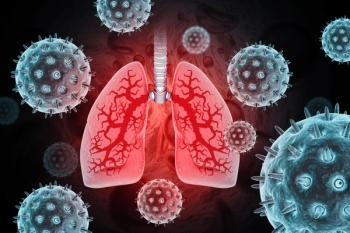
Cervical Cancer: Common But Easily Preventable
January has been Cervical Cancer Awareness Month, but this serious yet easily preventable condition deserves attention all year.
Editor’s Note: Welcome to the new Beyond the Counter section of Pharmacy Times. Each month we will choose a condition and post a series of articles designed to raise awareness about that condition. We hope that these articles will provide you with information you can use in counseling as well as casual conversations with your patients. Our focus this month is cervical cancer: January is Cervical Cancer Awareness Month, but this serious yet easily preventable condition deserves attention all year.
Cervical cancer is the second most common type of cancer in women worldwide. In the United States, approximately 13,000 women will be diagnosed with the disease this year, and approximately 4,000 will die from it. Despite being so widespread, cervical cancer is highly preventable and, if detected early, survival is almost assured—which is why it is so important to raise awareness about it.
Cervical cancer primarily affects middle-aged women. Approximately half of those who are diagnosed are between the ages of 35 and 55, and the disease is rare in those older than 65 or younger than 20. However, one of the most important steps one can take to reduce one’s risk of developing cervical cancer later in life is to get the human papillomavirus (HPV) vaccine when young.
HPV, which causes cervical cancer along with a number of other cancers, is the most common sexually transmitted infection in the United States. There are about 6 million new cases of HPV every year in the United States, and researchers estimate that at least 20 million people are already infected in the United States. There are currently 2 HPV vaccines available: Gardasil and Cervarix. The Centers for Disease Control and Prevention (CDC) recommends vaccination for all girls and women aged 11 to 26.
Approximately 80% of all women become infected with HPV at some point before they reach 50. However, in the vast majority of these women, the immune system takes care of the virus before it turns into a major problem. Most women don’t even know they are infected.
But for those women who don’t clear the infection on their own, HPV poses a serious threat. A lingering HPV infection can lead to cervical cell abnormalities, and cervical cancer can then develop slowly but surely over a period of 10 to 20 years.
Women who smoke, have HIV, or are overweight are at increased risk for developing cervical cancer because their immune systems are likely to be weaker and less able to tackle an HPV infection. Women with a family history of cervical cancer are also at increased risk.
Regular Pap test screening is essential for detecting abnormal or precancerous cells early enough so they can be treated before cervical cancer develops. The CDC and American Cancer Society recommend that all women between the ages of 21 and 65 be tested once every 3 years. (Most women who are diagnosed with cervical cancer haven’t been screened for at least 5 years, if ever.)
Women over 30 may choose to receive a test for HPV infections as well as a Pap test. Women who are negative on both tests only need to be tested every 5 years. However, patients who receive a positive HPV result may need more frequent Pap tests as well as other tests to help prevent and detect cervical cancer.
Cervical cancer can be easily prevented. But for many women with low incomes, prevention can be a challenge. Lacking money or insurance to cover Pap tests, many women are never tested or treated, putting them at increased risk for cervical cancer.
For further information:
- National Cervical Cancer Coalition: http://www.nccc-online.org/
- CDC: http://www.cdc.gov/cancer/cervical/
- American Cancer Society: http://www.cancer.org/cancer/cervicalcancer/
Newsletter
Stay informed on drug updates, treatment guidelines, and pharmacy practice trends—subscribe to Pharmacy Times for weekly clinical insights.





















































































































































































































